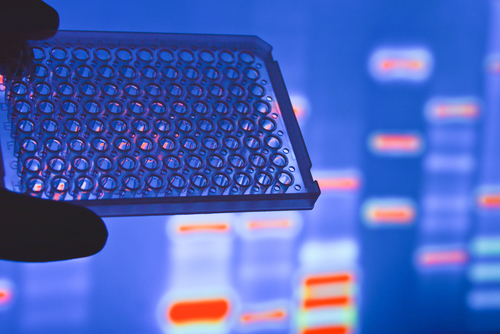Activation of a gene called GATA6 may be a useful biomarker to aid in the diagnosis of endometriosis lesions, an early research study reports.
The study provides evidence that endometriotic cells carry an abnormal pattern of DNA methylation that underpins the aberrant expression of GATA6 during endometriosis, a feature known from previous studies.
The study “GATA6 expression promoted by an active enhancer may become a molecular marker in endometriosis lesions” was published in the journal American Journal of Reproductive Immunology.
The aberrant expression of some genes (activation of genes that are normally silenced and vice-versa) has been demonstrated in endometriotic cells. However, the reason why this happens is unclear. One reason may be a type of DNA modification called CpG methylation, which happens at specific sites across the genome of these cells, leading to the activation of genes that would be otherwise be silent, or the reverse.
Based on this hypothesis, a team of scientists at Tottori University Faculty of Medicine in Japan investigated whether there are specific endometriosis-associated DNA methylation patterns that can be used as markers of endometriotic lesions. They compared the methylation pattern in endometriotic tissue (cells from ovarian cysts) of 12 patients with normal endometrial cells (that line the uterus) from healthy patients.
Researchers specifically focused on the methylation of a gene called GATA6, as this gene was reported in previous studies to be highly active in endometriotic cells but not in normal tissue. GATA6 provides instructions for the production of the GATA binding protein 6, a protein referred to as transcription factor. It binds to and switches on genes important for embryonic development. Therefore, it is normally active primarily during embryogenesis (formation of an embryo) rather than in adults.
However, researchers found that in endometriotic cells, there was a stretch of low methylated DNA within the GATA6 gene, when compared with healthy tissue. Consistent with what was reported before, endometriotic cells were also expressing GATA6 abundantly compared with normal cells.
Researchers said that this poorly methylated sequence “may function as an enhancer in GATA6 gene expression,” abnormally increasing the activity of the gene in endometriotic lesions.
Additional DNA analysis and examination of GATA6 protein levels in tissues by microscope supported this hypothesis.
“This is the first implication showing a link between an aberrant DNA methylation. . . and gene expression in endometriosis,” the researchers stated.
They proposed that “GATA6 gene expression associated with aberrant DNA methylation may be a novel molecular marker for the diagnosis of endometriosis lesions.”

